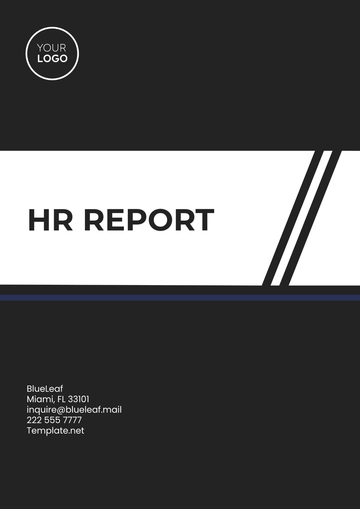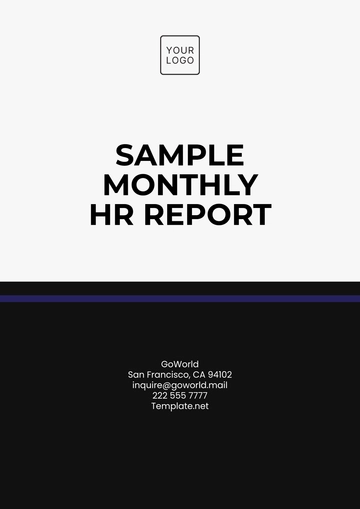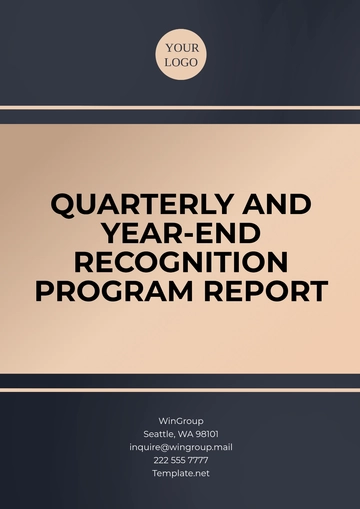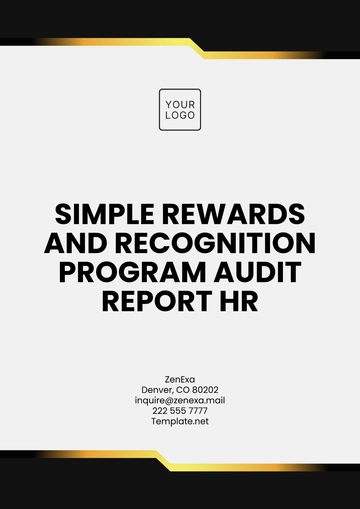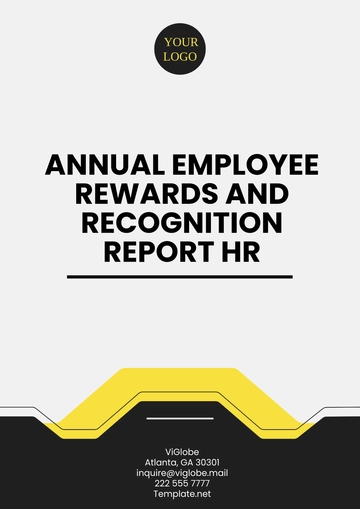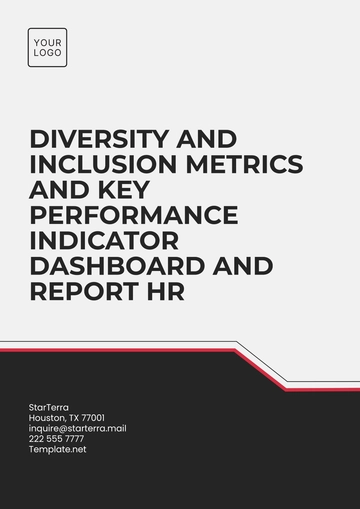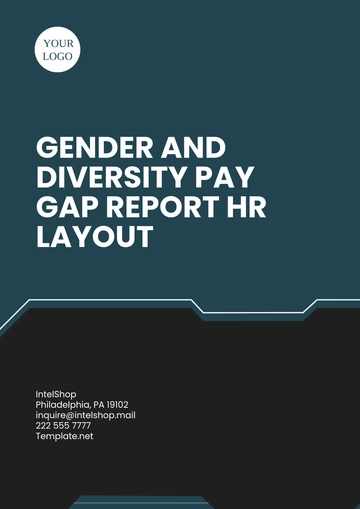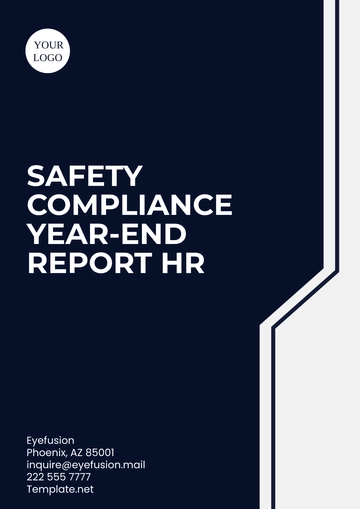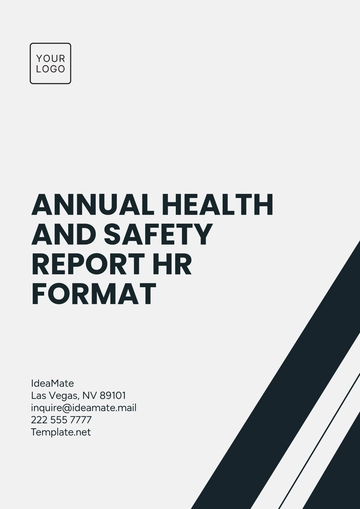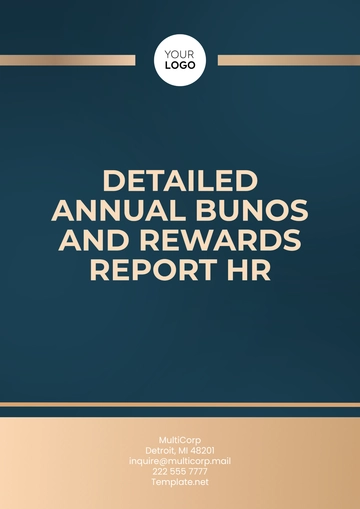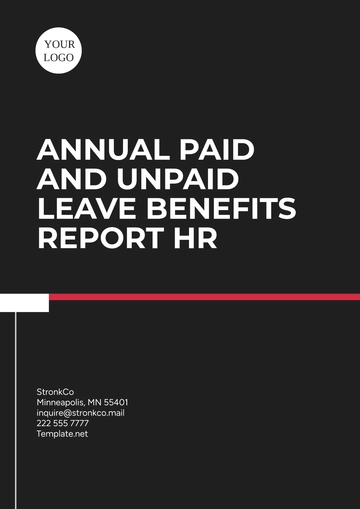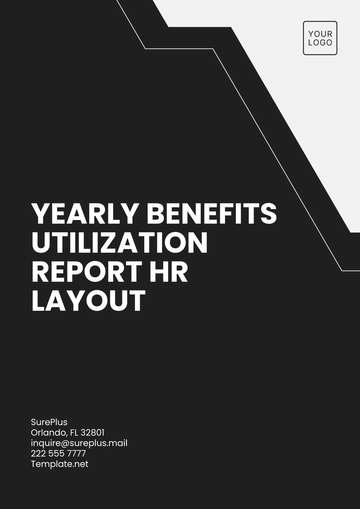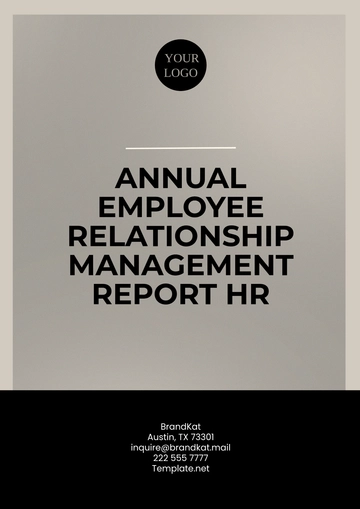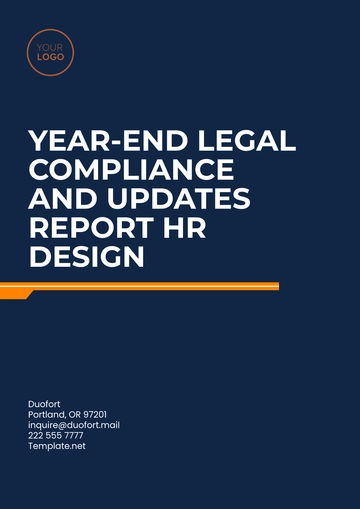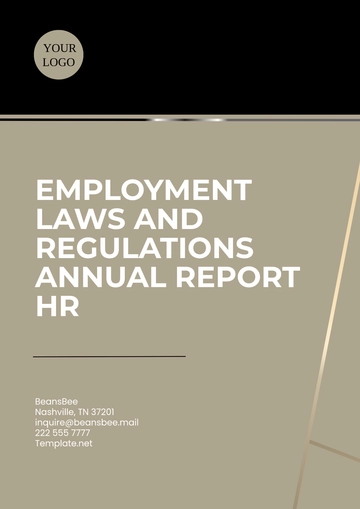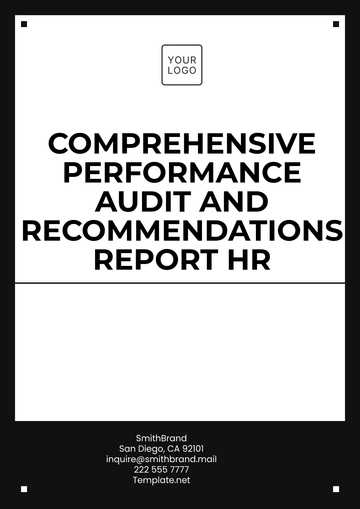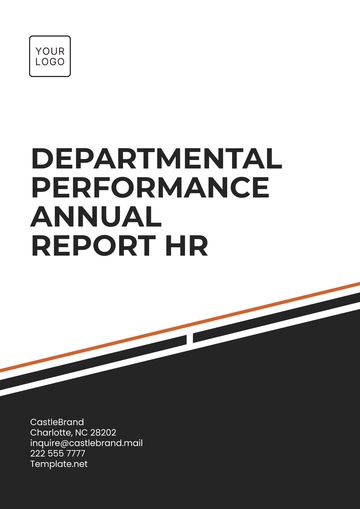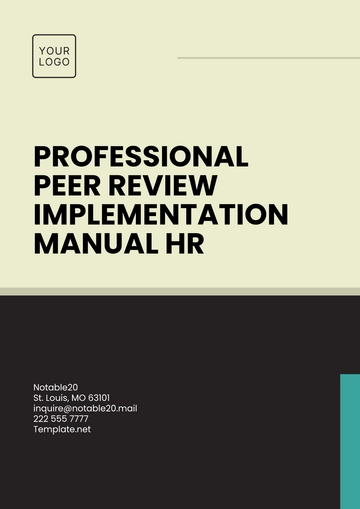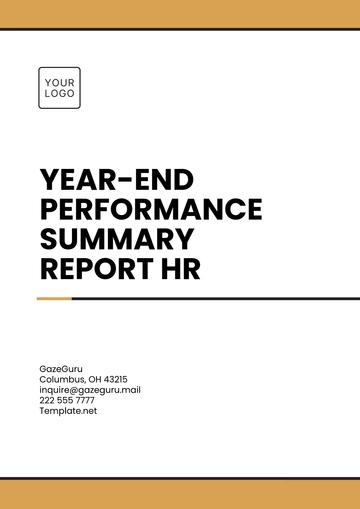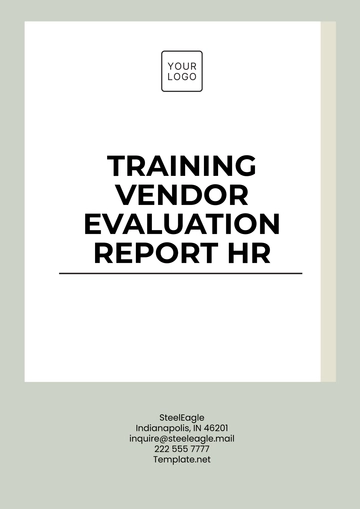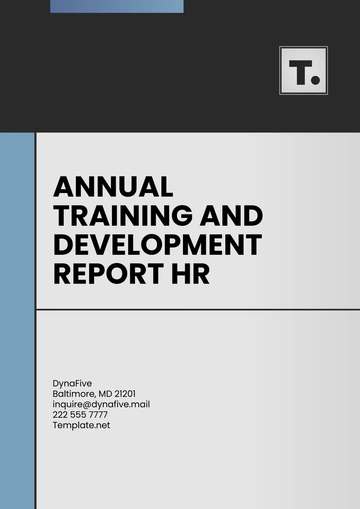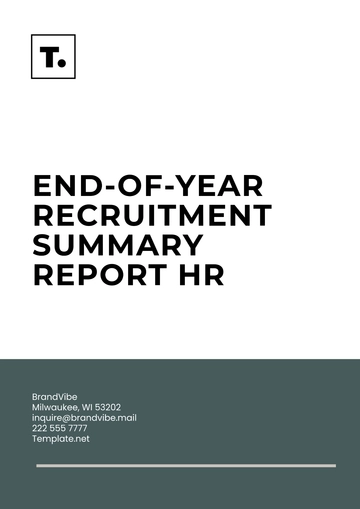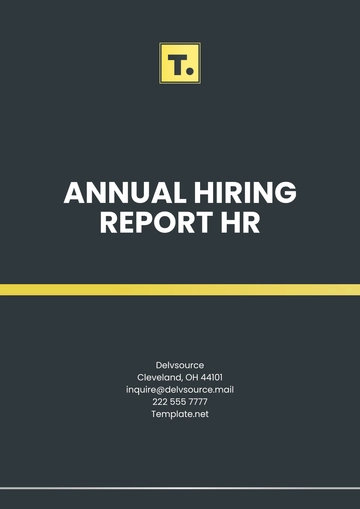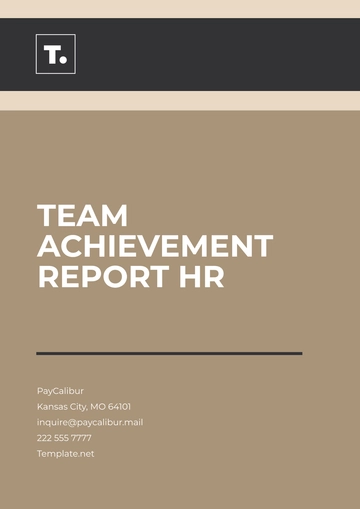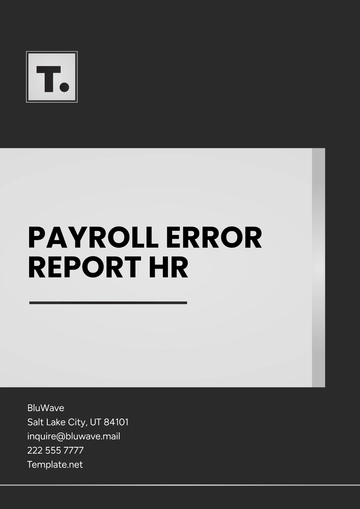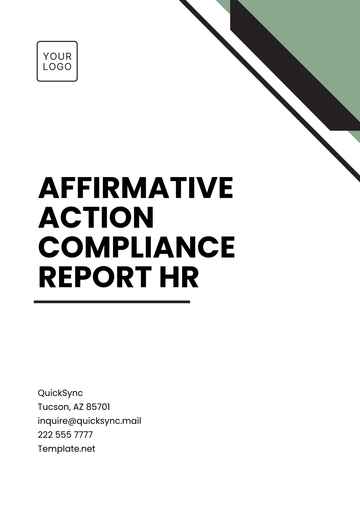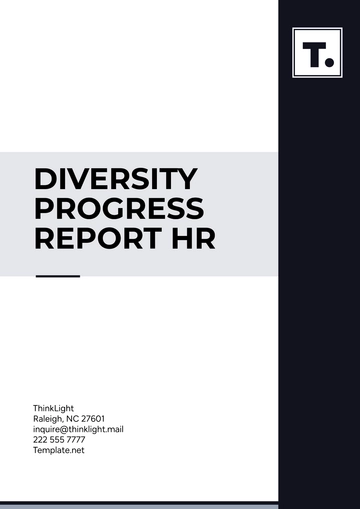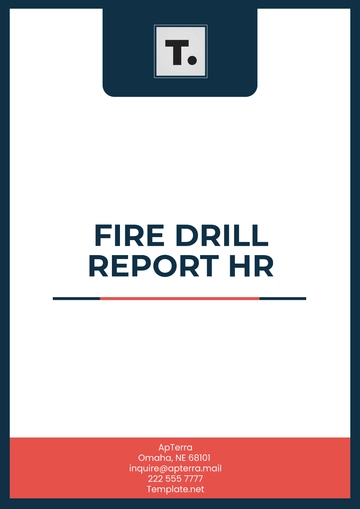Free Legal Employment & Labor Relations Report
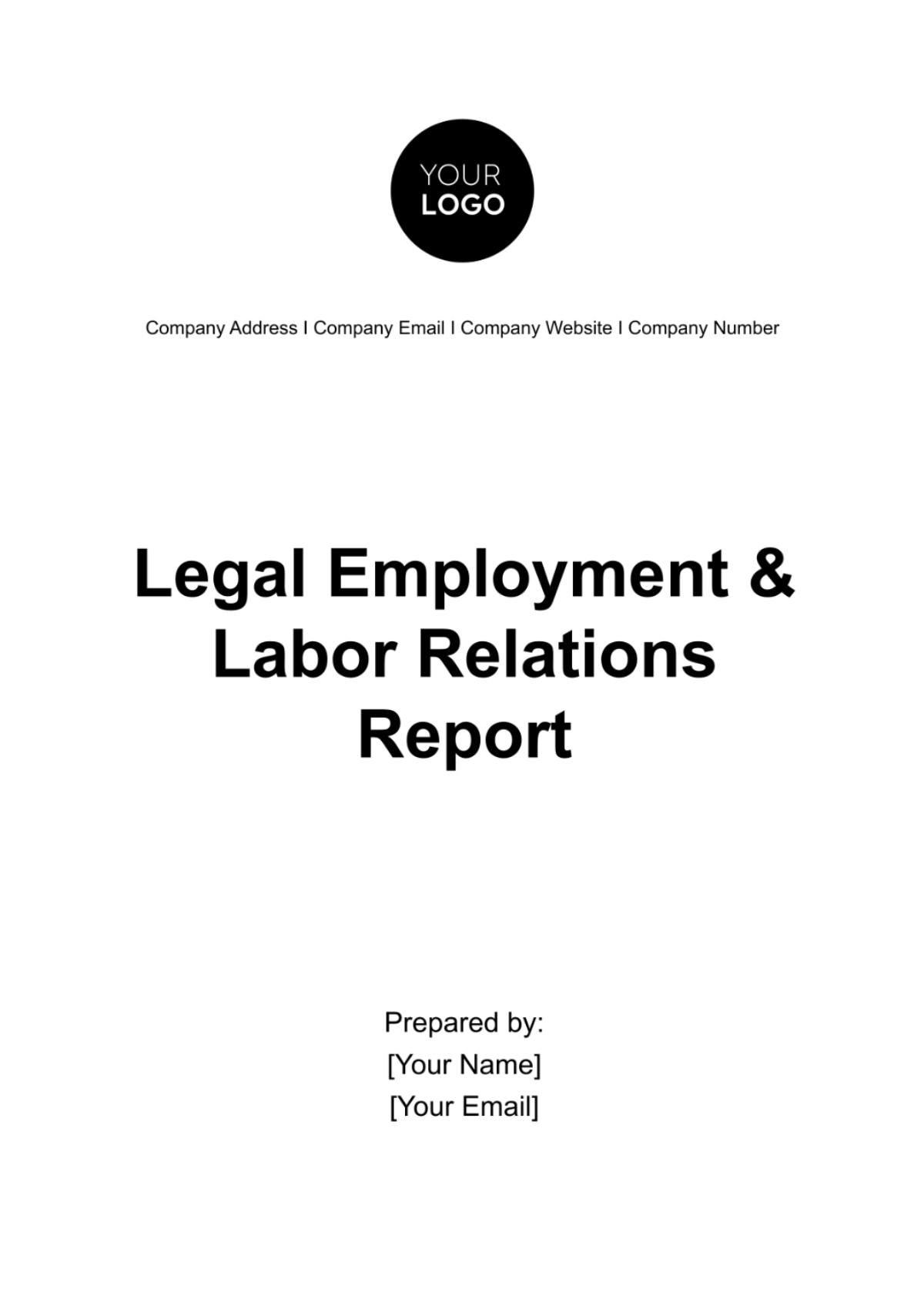
I. Executive Summary
This report provides an in-depth analysis of [Your Company Name]'s employment and labor relations practices, with a focus on compliance with relevant labor laws, effectiveness of labor relations strategies, and overall employment practices. Key findings indicate areas of strong compliance and best practices, as well as areas requiring improvement and attention. Recommendations are provided to enhance legal compliance, improve labor relations, and optimize employment practices to ensure a productive, secure, and fair work environment for all employees.
II. Introduction
In embarking on this comprehensive evaluation of [Your Company Name]'s employment and labor relations policies and practices, the report aims not only to ensure compliance with the complex web of applicable laws and regulations but also to foster a culture of transparency, respect, and mutual growth within the company. This initiative reflects [Your Company Name]'s commitment to excellence in all aspects of its operations, recognizing that the foundation of the company's success is built on the strength of its workforce.
Through this report, we seek to identify both strengths to be celebrated and challenges to be addressed, providing a roadmap for continuous improvement that aligns with our core values of integrity, innovation, and inclusivity. This holistic approach ensures that [Your Company Name] not only meets but exceeds the standards set forth by law and industry best practices, setting a benchmark for excellence in employment and labor relations.
III. Legal Compliance Overview
Federal Employment Laws
Fair Labor Standards Act (FLSA) | Reviewed payroll records for compliance with minimum wage, overtime pay, and record-keeping requirements. [Your Company Name] is generally compliant, with minor discrepancies in overtime calculations for certain employee categories. |
Occupational Safety and Health Administration (OSHA) Compliance | Facility inspections and employee interviews indicate compliance with workplace safety standards, with recommendations for enhanced training in specific areas. |
State-Specific Labor Laws
[Your Company Name]'s compliance with [State] labor laws demonstrates a solid foundation in meeting and often exceeding the minimum requirements set forth for wage, leave entitlements, and other employment conditions. Our internal audit, however, has identified areas where our practices could be enhanced, particularly regarding the documentation and enforcement of meal and rest breaks. While our policies are designed to comply with state laws, ensuring that employees take their entitled breaks, the lack of rigorous documentation has led to inconsistencies in enforcement and record-keeping. To address this, we recommend the implementation of an automated time-tracking system that prompts employees to take breaks and accurately logs these periods. This system will not only improve compliance but also contribute to the well-being of our workforce by ensuring they receive necessary rest during work hours.
International Labor Standards
In our global operations, [Your Company Name] endeavors to not only meet but exceed the international labor standards set by the International Labor Organization (ILO). Our commitment to ethical labor practices extends to every corner of our operations, including our supply chain, where we have identified opportunities for stronger alignment with these global standards. While we conduct regular audits of our suppliers to ensure compliance with labor laws and the ILO conventions, we recognize the need for more rigorous oversight and collaboration to address labor practices more effectively.
To enhance our alignment with international labor standards, particularly in our supply chain, we are initiating a comprehensive program to partner more closely with our suppliers. This program will involve detailed assessments of labor practices, joint workshops on labor rights and ethical labor practices, and the development of improvement plans with clear timelines and accountability. By investing in the capacity-building of our suppliers and fostering a culture of transparency and continuous improvement, we can make significant strides in promoting decent work and labor rights globally. This proactive approach not only ensures compliance with international standards but also strengthens our reputation as a socially responsible business, committed to ethical practices across all aspects of our operations.
IV. Labor Relations Framework
[Your Company Name] maintains a non-unionized workforce but fosters an open dialogue and collaborative relationship with employees. The Employee Feedback Program (EFP) and quarterly town hall meetings are effective in addressing employee concerns. Recommendations include formalizing a labor relations policy to guide future engagement and dispute resolution.
In addition to the existing efforts to foster open dialogue and collaborative relationships within [Your Company Name], our Labor Relations Framework seeks to further embed a culture of mutual respect and understanding between management and employees. Recognizing the dynamic nature of labor relations, we are in the process of establishing a Labor Relations Committee (LRC), comprising representatives from both employee groups and management. This committee's primary aim will be to proactively address labor-related issues, mediate disputes before they escalate, and work on developing policies that benefit both the company and its workforce. By institutionalizing this committee, [Your Company Name] intends to create a structured platform for regular interaction on labor matters, ensuring that employee voices are heard and considered in decision-making processes.
V. Employment Practices Analysis
Recruitment and Hiring Practices | The review of the recruitment process shows a robust strategy for attracting diverse talent. However, an analysis of hiring data suggests unconscious bias in selection processes for managerial positions. |
Performance Management and Evaluation | Performance evaluations are conducted annually, with a structured feedback mechanism. There's room for improvement in aligning individual performance metrics more closely with company strategic goals. |
VI. Work Environment and Employee Well-being
The commitment of [Your Company Name] to fostering a positive work environment and ensuring the well-being of its employees is a central pillar of our corporate ethos. Beyond compliance with safety standards and the provision of health benefits, we recognize that employee well-being encompasses physical, mental, and emotional health, all of which are critical to personal satisfaction and professional performance. To this end, [Your Company Name] has initiated several programs aimed at promoting a holistic approach to well-being, including flexible working arrangements that accommodate different life stages and responsibilities, and an on-site wellness center that offers fitness classes, health screenings, and wellness coaching.
VII. Challenges and Areas for Improvement
Compliance with State-Specific Labor Laws |
|
Alignment with International Labor Standards |
|
Diversity and Inclusion in Hiring Practices |
|
Performance Management and Evaluation |
|
Employee Well-being and Mental Health Support | Enhance support for mental health through expanded programs and resources, including access to counseling and stress management workshops. Increase communication and training for managers on supporting team members' mental health and well-being. |
VII. Recommendations
Legal Compliance Enhancements
Implement a compliance audit schedule, focusing on areas where discrepancies were noted, such as overtime calculations and meal/rest break documentation.
Labor Relations Improvements
Develop a formal labor relations policy, including mechanisms for regular, structured employee feedback and dispute resolution.
Employment Practices Optimizations
Introduce unconscious bias training for hiring managers and develop strategies for promoting internal diversity and inclusion at all levels of the company.
IX. Conclusion
The information provided in this report serves to underline the dedication and commitment of [Your Company Name] towards upholding and maintaining the highest possible standards in the realms of employment and labor relations. It showcases the company's integrity and assurance towards understanding and fulfilling the expectations of their employees and labor associates. The company recognizes and acknowledges the areas that require improvement as identified within this report. Addressing these issues effectively and in a timely manner is crucial for bettering the company’s overall performance.
There are three key benefits that the company can achieve by taking action on these identified areas. The first is the enhancement of compliance by aligning the company's practices more closely with legal and industrial standards. This would result in lesser violations and discrepancies, thereby streamlining processes and guaranteeing a higher level of adherence to necessary policies. The second benefit involves the strengthening of the company’s labor relations.
By addressing the key areas requiring improvement, the company can ensure labor satisfaction, reducing any possibility of labor turmoil and ensuring a more peaceful, productive, and harmonious workplace environment. The final benefit is the optimization of the company's employment practices. With changes implemented based on the identified areas of improvement, the company can offer better employment conditions, ensuring increased job satisfaction, and ultimately leading to improved productivity and efficiency.
In conclusion, by taking appropriate action on the identified areas needing improvement as mentioned in the report, [Your Company Name] can take a significant stride towards better corporate practices while ensuring stronger compliance, labor relations, and optimized employment practices.
- 100% Customizable, free editor
- Access 1 Million+ Templates, photo’s & graphics
- Download or share as a template
- Click and replace photos, graphics, text, backgrounds
- Resize, crop, AI write & more
- Access advanced editor
Optimize your HR reporting with Template.net's Legal Employment & Labor Relations Report Template. This essential tool is fully customizable and editable with our Ai Editor Tool, designed to streamline the documentation of workplace relations and labor issues. Ensure accurate, comprehensive reporting to enhance decision-making and maintain compliance. Transform your HR processes with Template.net's professional solution.
You may also like
- Sales Report
- Daily Report
- Project Report
- Business Report
- Weekly Report
- Incident Report
- Annual Report
- Report Layout
- Report Design
- Progress Report
- Marketing Report
- Company Report
- Monthly Report
- Audit Report
- Status Report
- School Report
- Reports Hr
- Management Report
- Project Status Report
- Handover Report
- Health And Safety Report
- Restaurant Report
- Construction Report
- Research Report
- Evaluation Report
- Investigation Report
- Employee Report
- Advertising Report
- Weekly Status Report
- Project Management Report
- Finance Report
- Service Report
- Technical Report
- Meeting Report
- Quarterly Report
- Inspection Report
- Medical Report
- Test Report
- Summary Report
- Inventory Report
- Valuation Report
- Operations Report
- Payroll Report
- Training Report
- Job Report
- Case Report
- Performance Report
- Board Report
- Internal Audit Report
- Student Report
- Monthly Management Report
- Small Business Report
- Accident Report
- Call Center Report
- Activity Report
- IT and Software Report
- Internship Report
- Visit Report
- Product Report
- Book Report
- Property Report
- Recruitment Report
- University Report
- Event Report
- SEO Report
- Conference Report
- Narrative Report
- Nursing Home Report
- Preschool Report
- Call Report
- Customer Report
- Employee Incident Report
- Accomplishment Report
- Social Media Report
- Work From Home Report
- Security Report
- Damage Report
- Quality Report
- Internal Report
- Nurse Report
- Real Estate Report
- Hotel Report
- Equipment Report
- Credit Report
- Field Report
- Non Profit Report
- Maintenance Report
- News Report
- Survey Report
- Executive Report
- Law Firm Report
- Advertising Agency Report
- Interior Design Report
- Travel Agency Report
- Stock Report
- Salon Report
- Bug Report
- Workplace Report
- Action Report
- Investor Report
- Cleaning Services Report
- Consulting Report
- Freelancer Report
- Site Visit Report
- Trip Report
- Classroom Observation Report
- Vehicle Report
- Final Report
- Software Report
